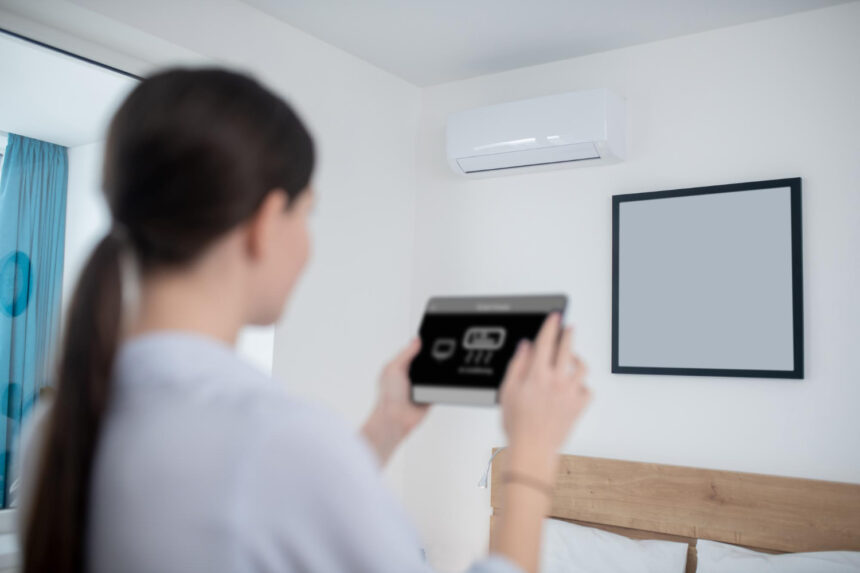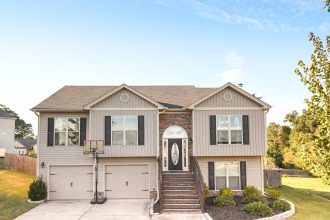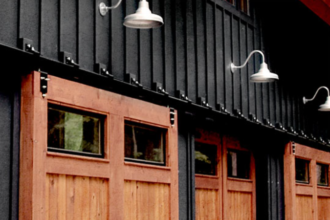Summer brings that sticky, uncomfortable feeling when your house feels like a sauna even with the AC running. That’s where dry mode on the AC comes to the rescue – it pulls excess moisture from your indoor air without freezing you out. Many homeowners miss out on this feature, not realizing it could cut their cooling bills while making their homes feel much more comfortable.
How Dry Mode Works
You’ve probably noticed how a 78°F day in Arizona feels totally different from 78°F in Florida. That’s humidity at work. Your body cools through sweat evaporation, which barely happens in muggy air.
Dry mode for air conditioner units tackles this problem differently than regular cooling. While cooling mode blasts cold air continuously, dry mode plays a clever trick: it runs the compressor in short bursts while keeping the fan at low speed. This causes moisture to condense on the cooling coils without dropping the room temperature dramatically.
The temperature might only drop 2-3 degrees, but you’ll feel much more comfortable because the sticky feeling disappears. Think of it as removing the blanket of humidity that traps heat against your skin.
When To Actually Use Dry Mode
Forget generic advice – here’s when dry mode really shines:
- Those muggy spring and fall days when it’s not hot enough for full cooling but too sticky for comfort. When outdoor humidity hits 50-65%, dry mode becomes your best friend.
- After a shower, your bathroom mirror stays foggy for ages. Run dry mode for 20 minutes to clear that lingering steaminess.
- Rainy weeks when everything feels damp. Your books, sheets, and even clothes start feeling slightly wet to the touch.
- Early mornings often have the highest humidity. Run dry mode for an hour after waking up, then switch to regular cooling if temperatures climb later.
- Basement game rooms or home gyms where moisture tends to accumulate. These spaces benefit from a two-hour dry mode session before use.
- Beach house owners know the struggle – salt air carries extreme humidity. Coastal homes should use dry mode almost daily during summer months, even when temperatures seem mild.
- After cooking pasta or boiling anything in the kitchen, switch nearby units to dry mode for 30 minutes to remove that cooking steam.
The Money You’ll Actually Save
Let’s talk real numbers without the marketing hype. A medium-sized 12,000 BTU air conditioner gulps about 1,200 watts in cooling mode. Switch to dry mode, and that drops to around 700-800 watts during the shorter compressor cycles.
For a typical home running AC 8 hours daily, you’ll save roughly $15-30 monthly on your electric bill. Not retirement-fund changing, but enough for a nice dinner out.
The bigger savings come from your AC’s extended lifespan. The compressor works 30-40% less in dry mode, and since replacing a compressor costs $800-1,500, adding years to your system pays off substantially.
A repair technician let me know that homes using dry mode appropriately need fewer service calls. The units simply don’t work as hard, so parts last longer.
Room-by-Room Dry Mode Secrets
Your bedroom needs different treatment from your kitchen. Here’s how to customize:
- Bedrooms work best with humidity between 30-50%. Run dry mode for air conditioner units 90 minutes before bedtime, then switch to fan mode overnight. You’ll sleep better without that sweat-stuck-to-sheets feeling, and many people report fewer breathing issues.
- Living rooms handle humidity differently based on occupancy. Empty living rooms do fine with a short dry mode cycle in the morning. When hosting friends, the extra body heat and respiration moisture calls for running dry mode before guests arrive.
- Kitchens generate massive humidity spikes during cooking. Close adjacent doors when possible, cook with lids on pots, and run kitchen-area units on dry mode for 30 minutes after meal prep.
- Home offices with computers and printers benefit from morning dry mode sessions. Electronics generate heat and work better in lower humidity, plus static electricity diminishes with properly balanced moisture levels.
- Kids’ rooms often need extra attention because children release more moisture through respiration during sleep. A dry mode session before bedtime helps prevent that stuffy morning room smell.
Mistakes That Waste Energy and Comfort
Plenty of homeowners misuse dry mode and then wonder why it doesn’t work properly:
- Running dry mode in desert climates makes indoor air painfully dry. If you already see static sparks when touching doorknobs or wake up with a scratchy throat, your air might be too dry already.
- Cranking the fan speed to high during dry mode actually reduces its effectiveness. The air passes too quickly over the cooling coils, giving moisture less time to condense.
- Using dry mode when temperatures drop below 75°F often makes rooms uncomfortably cool. The temperature reduction might be small, but on milder days it can make spaces too chilly.
- Closing all vents except one doesn’t “concentrate” the dry mode effect – it strains your system. Keep vents open for proper airflow.
- Many users confuse dry mode with economy mode. They’re completely different functions – economy mode just adjusts temperature thresholds, while dry mode fundamentally changes how your system removes moisture.
- Believing that longer dry mode sessions work better leads to wasted energy. Most spaces reach optimal humidity within 2-3 hours. Beyond that, you’re just running your system for no benefit.
Keeping Your Dry Mode Working Right
The condensate drain gets clogged much faster when regularly using dry mode because more water flows through it. Pour a cup of white vinegar down the drain line every month to prevent algae and mold buildup.
Check your AC’s drain pan quarterly by sliding a flashlight near the indoor unit. If you spot standing water or algae growth, clean it before it causes odors or water damage.
Filters need more frequent attention with regular dry mode use. The moisture they catch becomes a perfect breeding ground for mold and bacteria. Rinse and dry them thoroughly every two weeks during humid seasons.
Water leaking around your indoor unit means the drain line might be clogged. Don’t ignore this – a wet spot means moisture isn’t being removed properly, and your dry mode function has essentially stopped working.
The Comfort/Efficiency Sweet Spot
Dry mode in AC systems offers that rare win-win of better comfort and lower bills. The key lies in using it strategically rather than as a set-and-forget solution. Most households benefit from morning and evening dry mode sessions during humid months, switching to regular cooling only during peak heat hours.
By paying attention to how your home feels rather than just what the thermometer says, you’ll find the perfect balance between removing sticky humidity and maintaining pleasant temperatures. Your skin, your sleeping quality, and your wallet will thank you for mastering this underused feature of your cooling system.














